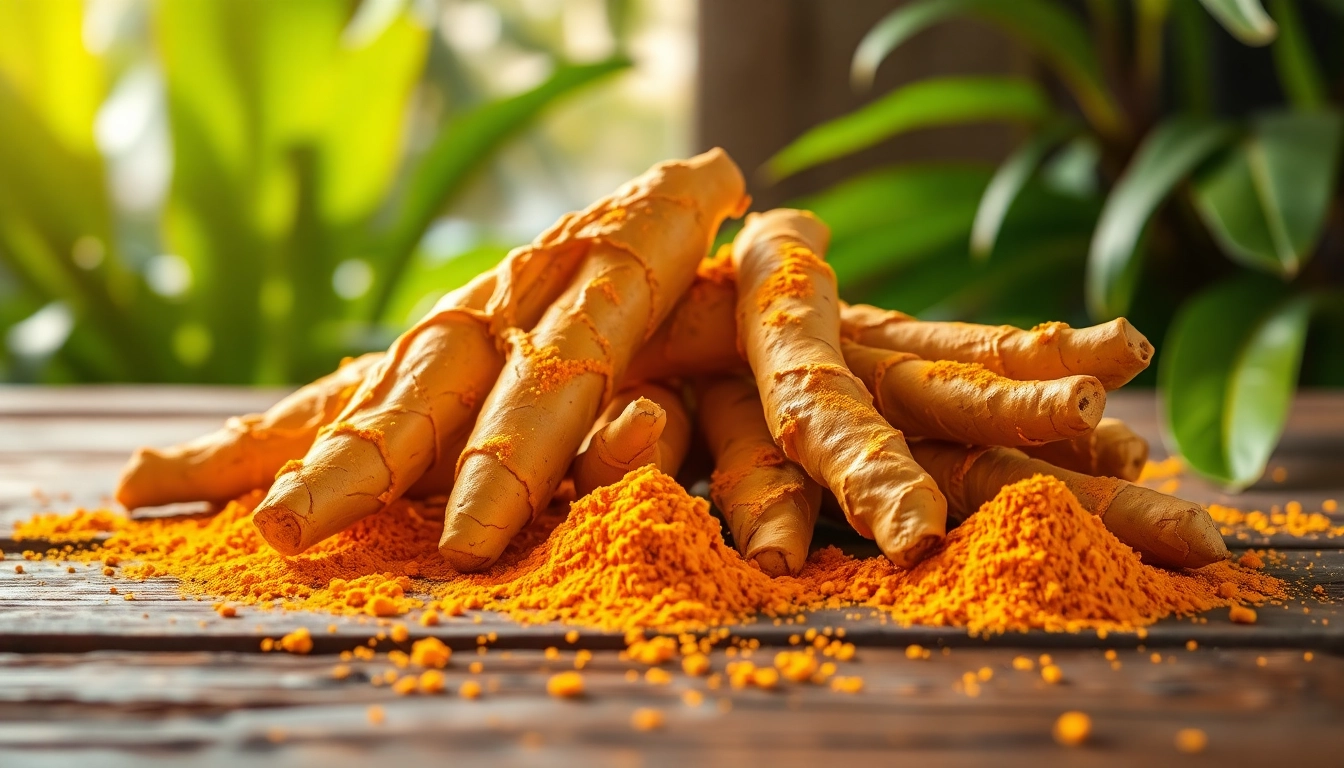Understanding Turmeric Root: An Ancient Superfood
History and Origins of Turmeric Root
Turmeric root, scientifically known as Curcuma longa, belongs to the ginger family and has been used for centuries in traditional medicine and cooking. Its origins trace back over 4,000 years to Southeast Asia, particularly in India, where it holds significant cultural and religious value. The vibrant yellow-orange spice is derived from the rhizome of the turmeric plant and is often referred to as “golden spice” because of its color and multitude of health benefits. Ancient texts such as the Ayurvedic scriptures depict turmeric as a powerful herb, revered not just for its flavor, but also for its ability to heal a range of ailments.
Nutritional Profile of Turmeric Root
Turmeric root boasts an impressive nutritional profile, packed with essential compounds and nutrients that contribute to its health benefits. The most notable component is curcumin, the active ingredient that gives turmeric its distinctive color. Though turmeric contains a modest amount of minerals such as manganese, iron, and potassium, its true strength lies in its potent antioxidant and anti-inflammatory properties. Just one teaspoon of turmeric powder provides approximately 24 calories, 0.8 grams of protein, and significant anti-inflammatory properties due to its high curcumin content, making it a valuable addition to your diet.
Cooking with Turmeric: Flavor and Aroma
The flavor profile of turmeric is earthy and slightly bitter, with a warm, peppery aroma. It’s a staple in many cuisines around the world, particularly in Indian, Middle Eastern, and Southeast Asian dishes. Turmeric can be used fresh, ground, or dried in various recipes, adding both a vibrant color and an exotic flavor. When cooking with turmeric, it’s often paired with black pepper—a combination that significantly enhances the absorption of curcumin, thus maximizing its health benefits.
Health Benefits: Why You Should Include Turmeric Root in Your Diet
Anti-inflammatory Properties of Turmeric Root
Turmeric root is widely recognized for its remarkable anti-inflammatory properties. Studies have indicated that curcumin can inhibit several molecules known to play major roles in inflammation. Chronic inflammation is believed to be a significant factor in many diseases, including heart disease and cancer. Thus, incorporating turmeric into your diet can help combat these inflammatory responses and promote overall health.
Turmeric Root and Its Role in Digestive Health
In addition to its anti-inflammatory benefits, turmeric root can play a vital role in digestive health. It stimulates bile production, aiding in fat digestion and promoting nutrient absorption. Turmeric also possesses antimicrobial properties that help maintain a balanced gut microbiome. By adding turmeric root to your meals, you can enhance your digestive efficiency and potentially alleviate symptoms of digestive disorders such as bloating and gas.
Antioxidant Benefits of Turmeric Root
Antioxidants are crucial for neutralizing free radicals that can cause cellular damage and hasten aging. Curcumin, the key compound in turmeric, is recognized as a potent antioxidant that can help protect the body against oxidative stress. Regular consumption of turmeric root has been linked to decreased signs of aging and improved overall wellness, making it a valuable addition to anyone’s health regimen.
How to Use Turmeric Root in Your Cooking
Preparing Fresh Turmeric Root for Recipes
Fresh turmeric root resembles ginger but has a vibrant orange hue. When preparing fresh turmeric, it is crucial to handle it with care as it can stain surfaces and clothing. Start by peeling the skin with a vegetable peeler, then slice or grate the rhizome to incorporate it into your recipes. Fresh turmeric is fantastic in curries, soups, and smoothies, providing a fresh kick of flavor and nutrition.
My Favorite Turmeric Root Recipes
Here are a few delicious recipes that showcase turmeric root:
- Turmeric Golden Milk: A soothing beverage made by simmering fresh turmeric, ginger, and milk (or plant-based alternatives) together with spices like cinnamon and black pepper.
- Turmeric Quinoa Salad: A refreshing salad featuring cooked quinoa tossed with fresh vegetables, a dressing of olive oil, lemon, and grated turmeric.
- Spiced Chickpea Curry: A hearty curry where sautéed onions, tomatoes, and spices are combined with chickpeas and fresh turmeric, providing a warming dinner option.
Incorporating Turmeric Root into Smoothies and Juices
Adding turmeric root to your morning smoothies or juices is an excellent way to incorporate its health benefits seamlessly into your diet. A simple combination of banana, spinach, coconut water, and fresh grated turmeric creates a nutrient-packed drink that can boost your energy levels. For a refreshing juice, combine carrots, apples, ginger, and turmeric for a vibrant immune-boosting drink. The key is to start with small amounts of turmeric and adjust to your taste preferences.
Where to Buy High-Quality Turmeric Root
Identifying Fresh and Organic Turmeric Root
When purchasing turmeric root, it’s essential to look for freshness and quality. Fresh turmeric should be firm, with a slight sheen and a bright orange color within. If you opt for dried or powdered turmeric, ensure that it has been stored in airtight containers, away from light, as exposure can cause degradation of its beneficial properties. Organic turmeric is recommended to avoid potential pesticide residues commonly found in conventionally grown produce.
Online Retailers and Local Markets for Turmeric Root
High-quality turmeric root can be found both online and in local markets. Many health food stores and specialty spice shops carry fresh turmeric, while online retailers often have a wider selection, including dried and organic variants. For high-quality options, consider checking out the well-reviewed sellers on platforms like Amazon or specialty websites such as Turmeric Root, which offer a variety of products catering to health enthusiasts.
Comparing Prices of Turmeric Root: What You Should Know
Pricing for turmeric root can vary based on its form (fresh, dried, or powdered) and quality (organic vs. conventional). Generally, fresh turmeric root can be more expensive per pound than ground turmeric, but its superior flavor and health benefits often justify the price. When comparing prices, consider the quality and other product reviews to ensure you are receiving the best value for your investment. Bulk purchasing can often provide cost savings, especially for dried forms of turmeric.
Conclusion: Embrace Turmeric Root for a Healthier You
Final Thoughts on the Benefits of Turmeric Root
Incorporating turmeric root into your diet can yield a host of health benefits, from powerful anti-inflammatory and antioxidant properties to promoting digestive wellness. Its rich history and versatility in cooking make it a fantastic superfood that not only enhances flavors but also contributes significantly to a healthier lifestyle.
Encouraging a Balanced Diet with Turmeric Root
As you explore the culinary uses of turmeric root, consider integrating it alongside a variety of other nutrient-dense ingredients. Balancing your meals with fresh vegetables, whole grains, and healthy fats can create a comprehensive dietary approach to well-being. Turmeric can easily complement these foods, enhancing not just health but also taste.
Your Next Steps: How to Start Using Turmeric Root
Start today by adding turmeric root to your next meal or beverage! Experiment with recipes, look for fresh options at your local market, or consider buying high-quality turmeric online. By beginning this journey toward better health with turmeric root, you’re not just embracing a new spice; you’re welcoming the transformative potential of this ancient superfood into your life.



